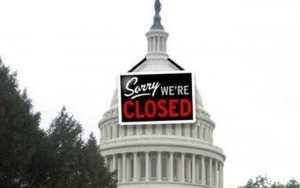This blog makes references to Candice Chiu’s blog post “WE are the Power of Change- The Story of a Social Enterprise” (https://blogs.ubc.ca/candicechiu/2013/11/13/we-are-the-power-of-change-the-story-of-a-social-enterprise/).
When I first heard that we were talking about social enterprises in class, the first organization that popped into my mind was Free the Children. Throughout my high school career, I have been actively inspired and involved with this organization. I have so much passion towards their vision, mission and their incredible work across the globe.
Free the Children is a charity organization that seeks to empower youth to make a difference in the world and to discover and achieve their full potential as change agents. Founded by a curious 12 year old, Craig Kielburger, along with his brother, Marc, have been changing the world since 1995. The movement is still strong and growing after all these years, driven with the same vision that initially sparked Craig’s passion.
Free the Children have since initiated many community charities and development programs to improve lifestyle and provide aid (such as enhancing education, water and sanitation, health, income and livelihood, and agriculture and food security) to third-world countries. Furthermore as discussed in Candice’s blog post, Me to We, a social enterprise, manufactures and sells products where part of the profit goes towards supporting Free the Children. Finally, Free the Children created We Day. We Day is a movement of this generation, empowering young citizens through a workshop-like day of speakers, performers and inspiration.
For the past couple years, I was blessed enough to be involved with many Free the Children’s campaigns including We Scare Hunger, We Create Change and two global initiatives. We Scare Hunger supported the food bank by collecting non-perishable food items on Halloween to raise awareness  about local hunger. We Create Change collected pennies to raise money to build schools over seas. Together with my high school, I helped create, organize and run two fundraiser which both raised more than $20,000 for water and sanitation projects in Kenya and to build schools in Sierra Leone. Because of my efforts in these initiatives, I was privileged enough to meet Craig Kielburger and other inspirational speakers, including Spencer West at We Day 2012.
about local hunger. We Create Change collected pennies to raise money to build schools over seas. Together with my high school, I helped create, organize and run two fundraiser which both raised more than $20,000 for water and sanitation projects in Kenya and to build schools in Sierra Leone. Because of my efforts in these initiatives, I was privileged enough to meet Craig Kielburger and other inspirational speakers, including Spencer West at We Day 2012.
 Without a doubt, it is evident I have a passion for this sort of work. I can not think of a more suitable example that fully encompasses the aspects of a social enterprise than Free the Children. Their charity is truly inspiration and is still growing. I am excited to see how the Kielburger brothers will continue to impact the world.
Without a doubt, it is evident I have a passion for this sort of work. I can not think of a more suitable example that fully encompasses the aspects of a social enterprise than Free the Children. Their charity is truly inspiration and is still growing. I am excited to see how the Kielburger brothers will continue to impact the world.
To learn more about this incredible organization, take a look at their website: http://www.freethechildren.com/about-us/our-story/
Check out this amazing movement that is sweeping across Canada and US: http://www.weday.com/what-is-we-day/our-story/
Source 1: http://www.huffingtonpost.ca/2012/09/28/free-the-children-penny-drive_n_1924312.html







 Price gouging is often defined as charging very high prices for products and items that are in high demand in market. A large part of society believes that price gouging is greedy and should be illegal. Is it unjust and unethical for price gouging to occur, especially after a natural disaster? Or does price gouging ultimately lead to a positive result?
Price gouging is often defined as charging very high prices for products and items that are in high demand in market. A large part of society believes that price gouging is greedy and should be illegal. Is it unjust and unethical for price gouging to occur, especially after a natural disaster? Or does price gouging ultimately lead to a positive result?